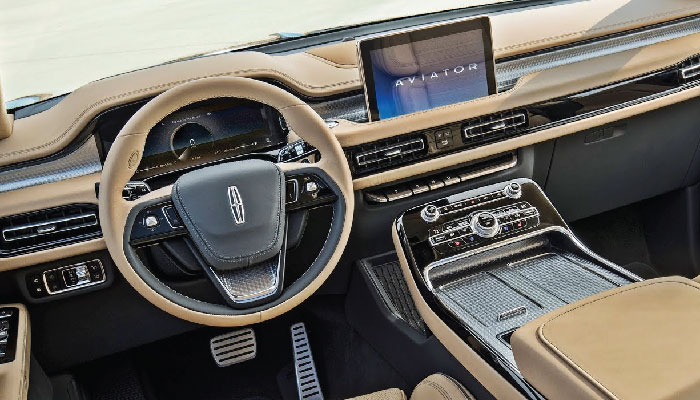The successful key of the new Lincoln Aviator SUV is its smart adaptive suspension system, which comprises the “road preview” feature.
When Lincoln’s new Aviator SUV, with three rows of seats, hits the market, its engineers are expecting it to have one of the smoothest drives in its category. This is thanks to its “road preview” feature, which uses a camera to scan the road ahead and use this information to constantly adjust the suspension in line with any large potholes or anomalies that are coming up.
A vehicle’s suspension often serves two purposes. First, it seeks to optimise the contact area of each tyre with the road, ensuring good handling and grip. But it also aims to absorb the shock of any potholes and to filter road vibrations, providing passengers with a more comfortable ride. For decades, this entailed a huge compromise when configuring the springs, shock absorbers and other bits attaching the wheels to the car. Driving enthusiasts could purchase adjustable shock absorbers, but this adjustment often required stopping, opening the boot and breaking an adjustable spanner.

Road preview
The idea of a suspension system that could react to various handling conditions while driving dates back, at least, to Citroen’s hydropneumatic suspension system in the 1950s. However, in reality, it was the arrival of electronic control that made current technology a possibility. Toyota started playing with this idea in the early 1980s with its Soarer coupé, which was sold in Japan. Perhaps readers will be more familiar with its use in Formula 1, where Lotus’ Colin Chapman first introduced it in an attempt to gain an advantage over his competitors. In 1992, the Williams F1 team refined the concept to such an extent that their FW14B model was almost invincible, leading to the sport’s organisers to prohibit this technology in future seasons.
A brief background
The future of car suspension is here: DSC Sport’s active shocks in action. Since then, adaptive suspension has been more commonly fitted in sports and luxury road vehicles (or cars which fall into both categories). Sometimes this is with computer-controlled valve shock absorbers; other times, magnetorheological fluid is used to alter the suspension.
In most cases, however, the systems—which depend on inputs from wheel sensors and accelerometers, often every second—are still reactive. Wouldn’t it be better if the car could receive warning of upcoming conditions?
Lincoln’s system, which is similar to the system that Audi is integrating in its A8 sedan in Europe, uses the car’s front camera to stay ahead of the game. It continually scans the next 50 feet (15m) of road and can detect road surface anomalies measuring 2 to 8 inches (50-200 mm) above or below the expected road surface. This allows the car to prepare the appropriate shock absorber (and air chamber, if this has been installed) for an upcoming pothole or sheet of ice, resulting in a smoother ride for the passengers.
This isn’t the most groundbreaking of technological developments for cars, but it’s a relatively clear way of using an existing sensor to develop a feature that engineers have dreamt of for decades.

Aviator SUV interior design






